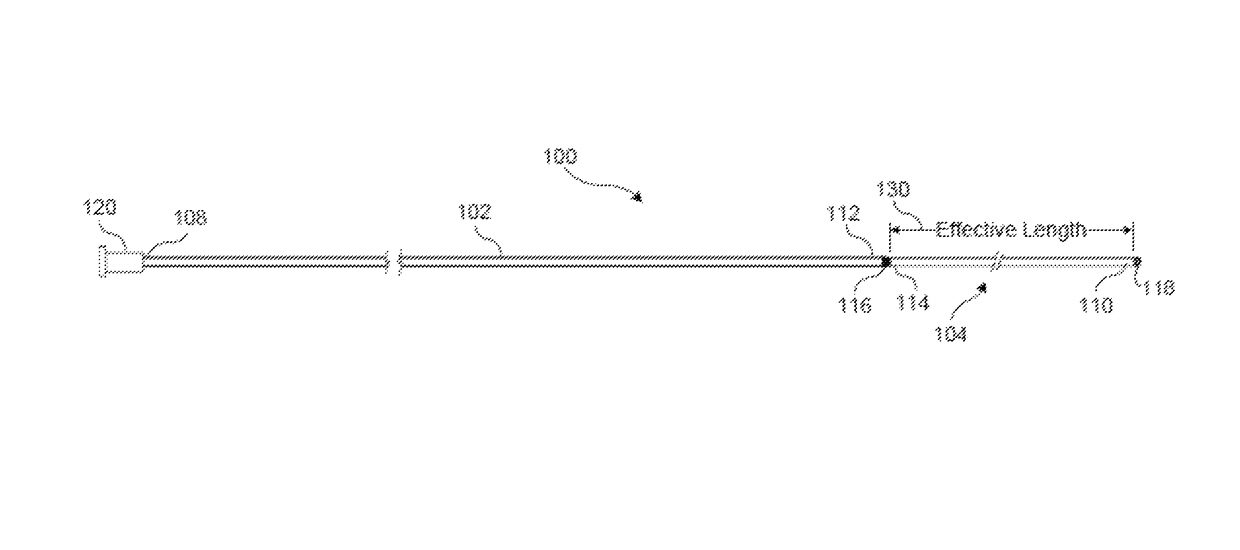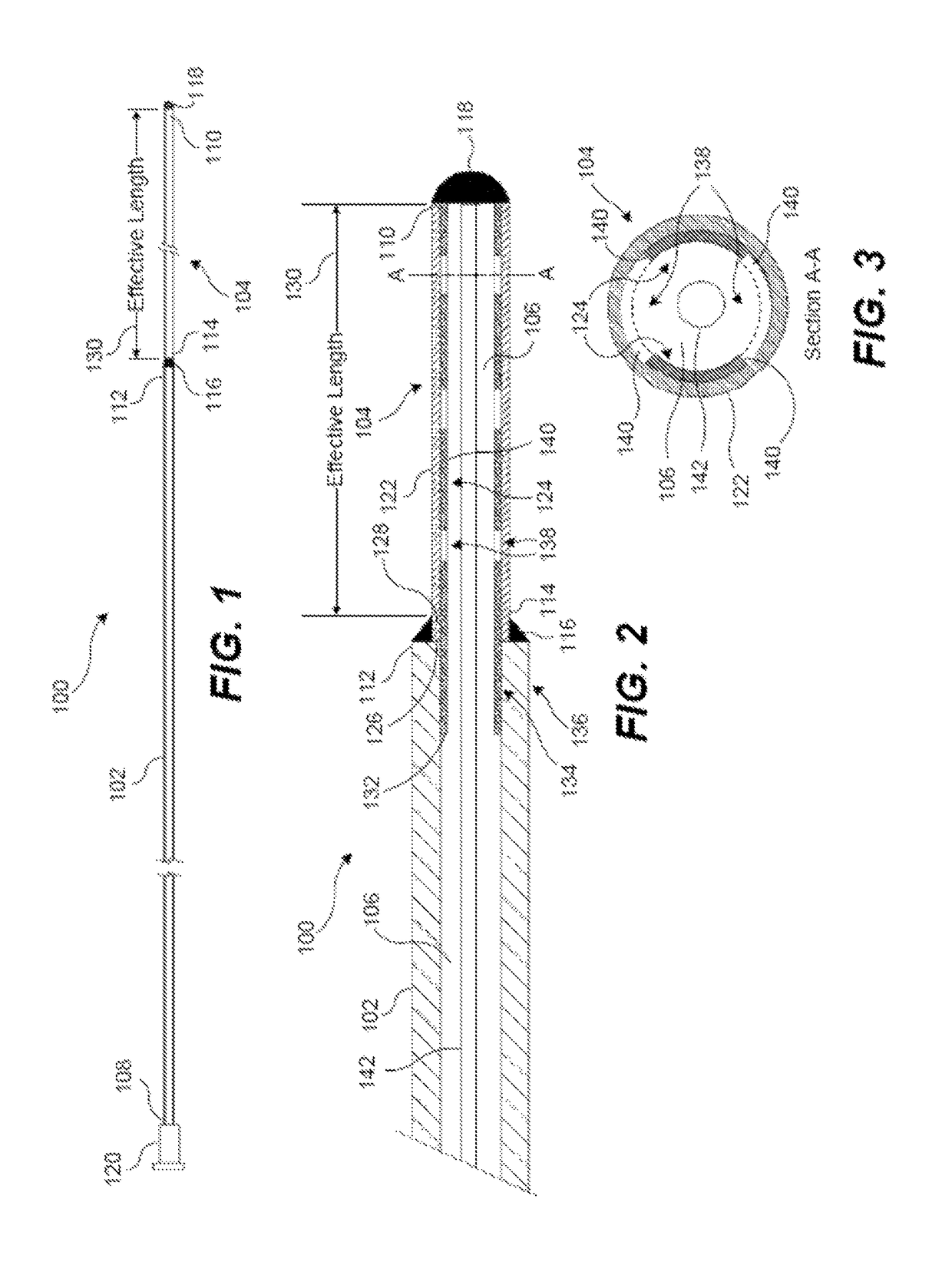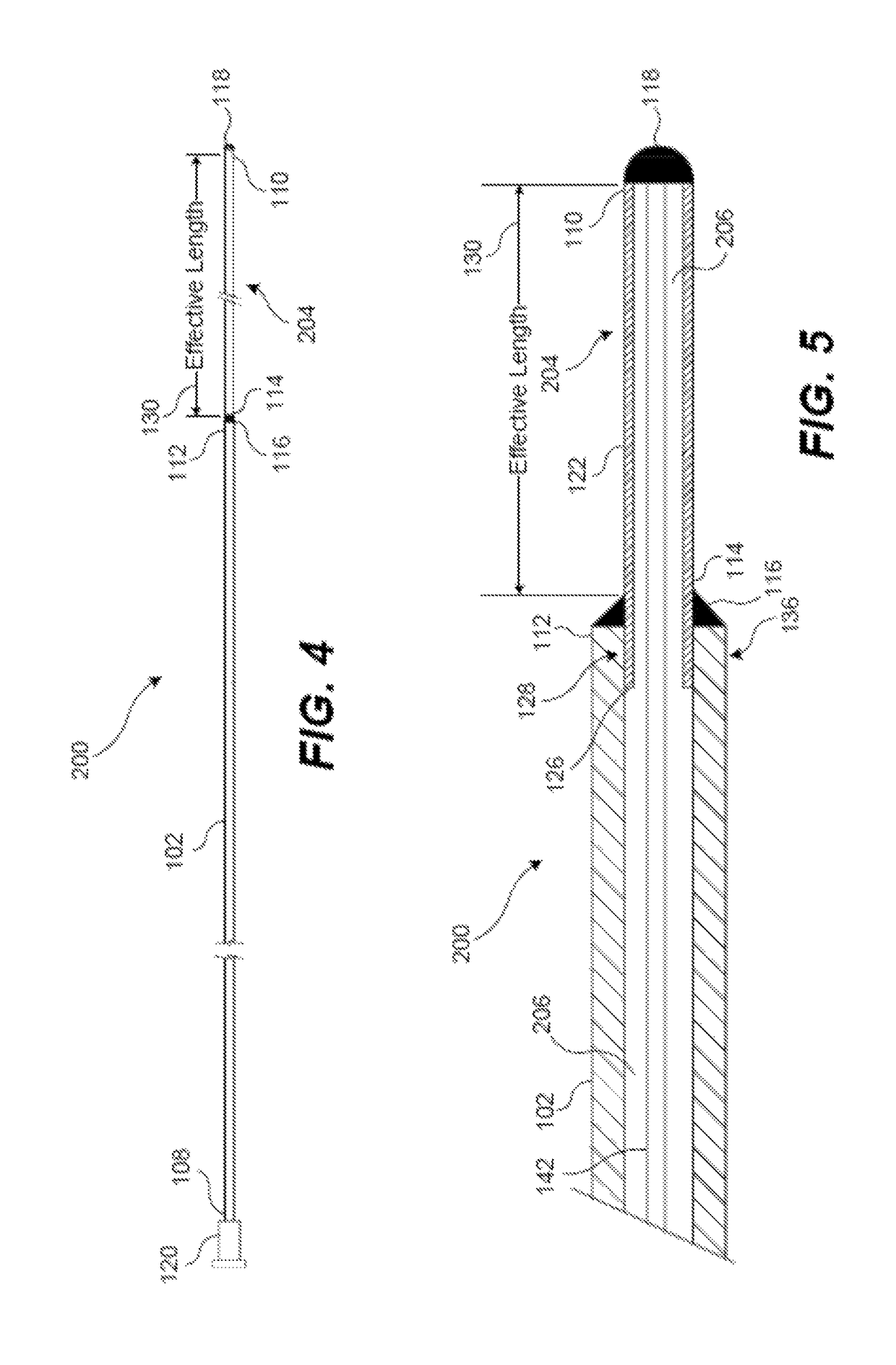Macroporous catheter
a catheter and micro-scopy technology, applied in the field of catheters, can solve the problems of difficult access to various sites within the body by minimally invasive means, inability to detect pathogens, and in turn treatment, and achieve the effects of minimizing tissue trauma, and reducing the risk of infection
- Summary
- Abstract
- Description
- Claims
- Application Information
AI Technical Summary
Benefits of technology
Problems solved by technology
Method used
Image
Examples
Embodiment Construction
[0033]While multiple embodiments of the invention are disclosed herein, still others may become apparent to those skilled in the art. In the following, certain illustrative and non-limiting embodiments are described in detail with reference to the accompanying drawings wherein like elements are designated by like numerals. It should be clearly understood that there is no intent, implied or otherwise, to limit the invention in any form or manner to that described herein. As such, all alternative embodiments are considered as falling within the spirit, scope and intent of the disclosure. The metes and bounds of the invention is defined by the appended claims and any and all equivalents thereof.
SELECTED NOMENCLATURE
[0034]100 catheter[0035]102 catheter body[0036]104 macroporous section[0037]106 lumen within catheter 100[0038]108 proximal end of catheter 100 (catheter body 102)[0039]110 distal end of catheter 100 (macroporous section 104; macroporous coil 122; internal support tube 124)[...
PUM
| Property | Measurement | Unit |
|---|---|---|
| outer diameter | aaaaa | aaaaa |
| outer diameter | aaaaa | aaaaa |
| pore sizes | aaaaa | aaaaa |
Abstract
Description
Claims
Application Information
 Login to View More
Login to View More - R&D
- Intellectual Property
- Life Sciences
- Materials
- Tech Scout
- Unparalleled Data Quality
- Higher Quality Content
- 60% Fewer Hallucinations
Browse by: Latest US Patents, China's latest patents, Technical Efficacy Thesaurus, Application Domain, Technology Topic, Popular Technical Reports.
© 2025 PatSnap. All rights reserved.Legal|Privacy policy|Modern Slavery Act Transparency Statement|Sitemap|About US| Contact US: help@patsnap.com



